MXA TECH SPEC: PURSUING THE AUTOMATIC-TRANSMISSION DREAM
Racers have often dreamed of automatic-transmission motocross bikes. Today, we are closer to that reality than ever with electric-powered motocross bikes, but, back in the day, the automatic dream was seriously pursued by Husky, Rokon and, to a lesser extent, Honda.
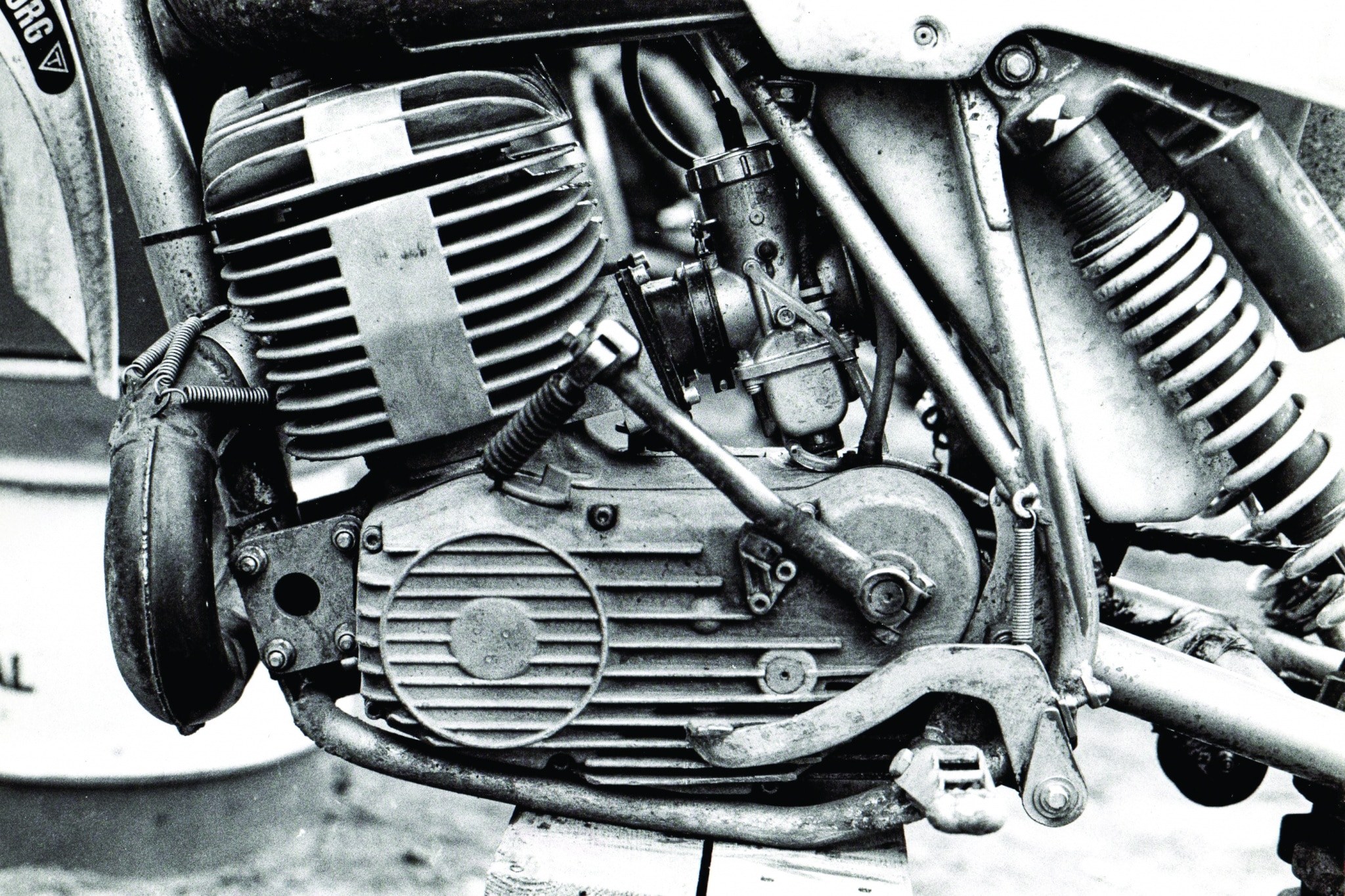 The Husqvarna Auto not only won many off-road races, but was also raced in the FIM 500 World Championships.
The Husqvarna Auto not only won many off-road races, but was also raced in the FIM 500 World Championships.
HUSQVARNA AUTOMATIC
The first functional automatic-transmission dirt bikes were built by Husqvarna. Starting with a 1973 prototype, Husqvarna built 250cc, 360c, 390cc, 420cc, 430cc and 500cc autos until they were taken over by Cagiva in 1987. The key to Husqvarna’s automatic transmission was an intricate four-speed gearbox driven via sequential centrifugal clutches. The Husky Auto shifted by itself via a series of complicated sprag gears and large-diameter dog-bone bearings that engaged in one direction and released in the other. It upshifted as long as you kept the throttle on and freewheeled when you shut the throttle off—until you turned the throttle back on.
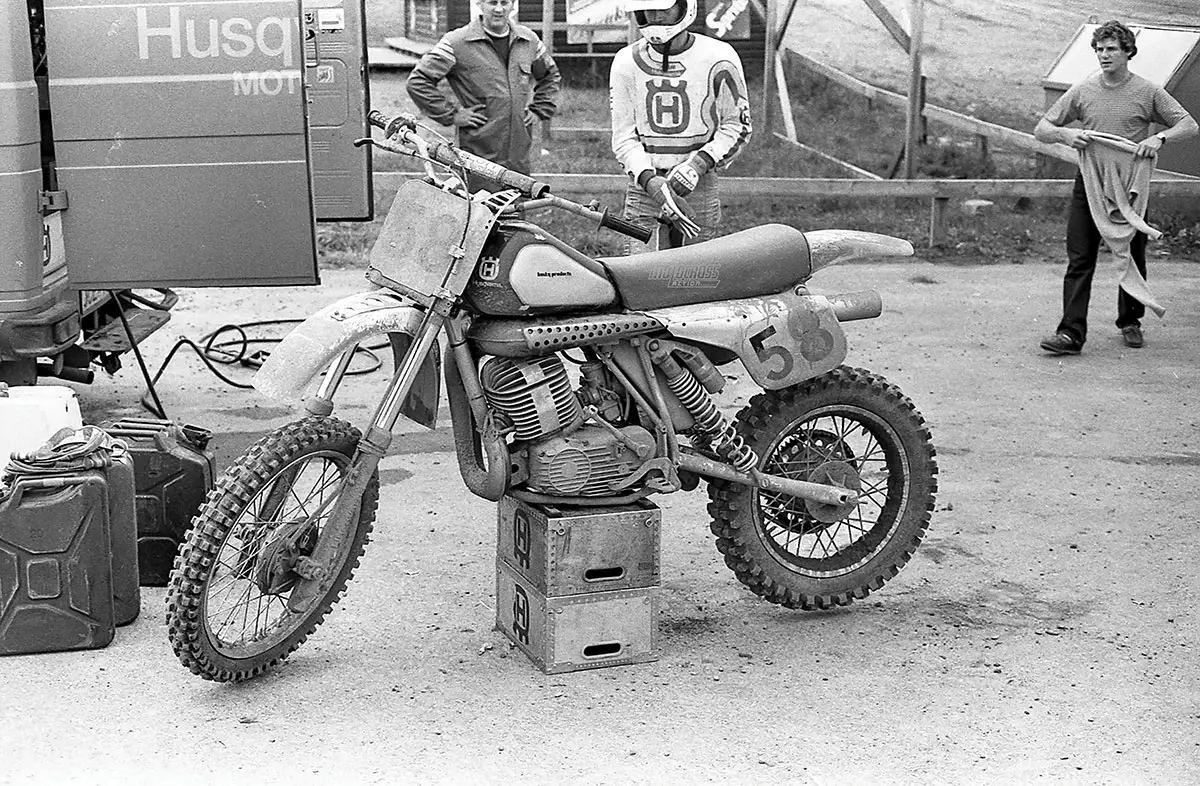 Bo Edberg’s works Husky 500 Automatic had a 488cc engine, sand-cast cases, lots of finning and, most intriguing, it had rear brake pedals on both sides of the bike.
Bo Edberg’s works Husky 500 Automatic had a 488cc engine, sand-cast cases, lots of finning and, most intriguing, it had rear brake pedals on both sides of the bike.
A centrifugal clutch, often referred to as a “slinger clutch,” uses clutch plates that are shaped like brake shoes (the clutch hub is the drum). The spring-loaded shoes spun inside the hub and were flung outwards as they overcame spring pressure.
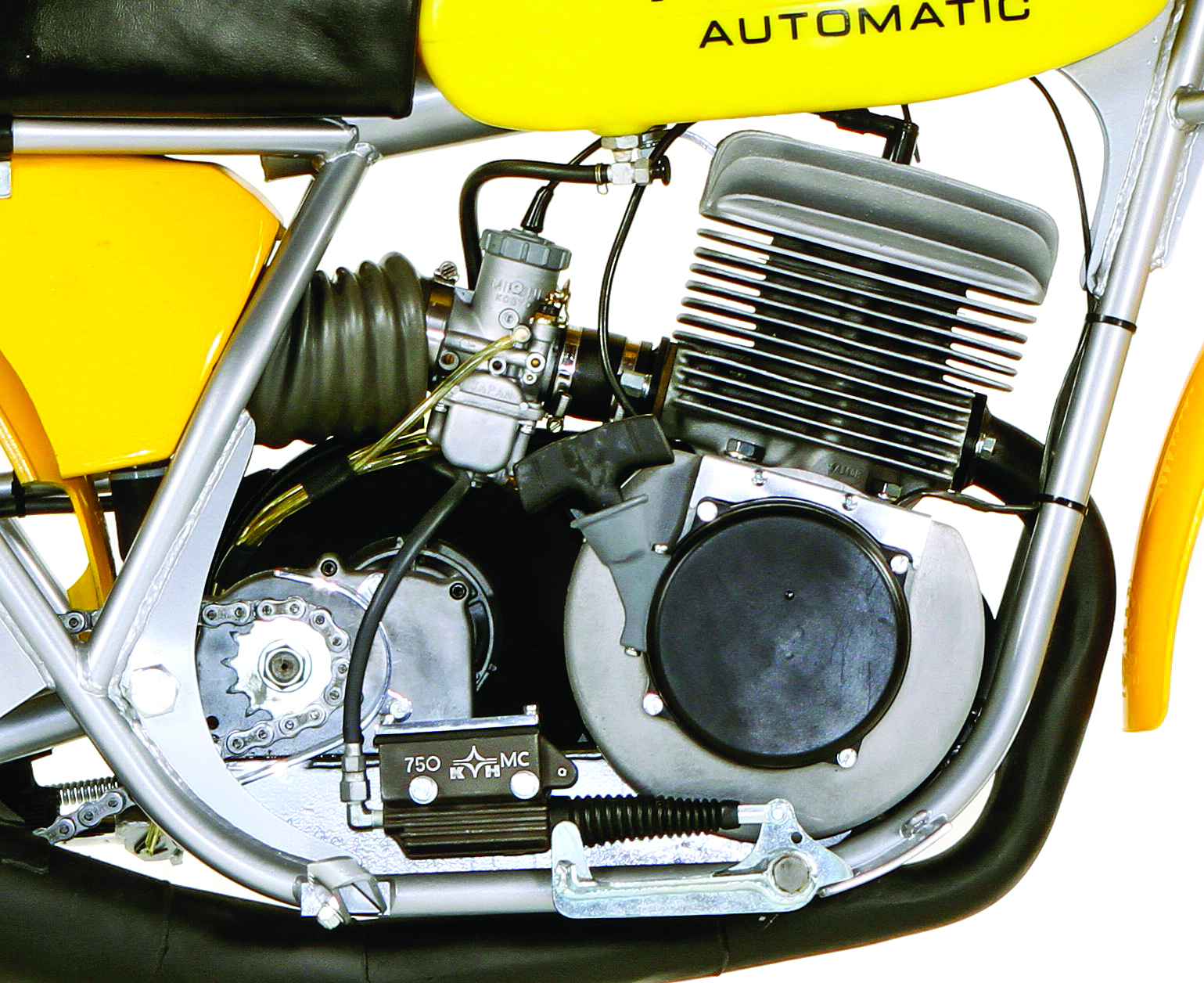 The snowmobile-powered Rokon 340 Cobra had a short lived career on the AMA National circuit.
The snowmobile-powered Rokon 340 Cobra had a short lived career on the AMA National circuit.
ROKON 340MX COBRA
The second-best-known automatic-transmission dirt bike was the 1975–’76 Rhode Island-made Rokon 340MX. It was powered by a 335cc Sachs two-stroke snowmobile engine that used a belt-driven Salisbury torque converter (off a snowmobile). The torque converter worked best between 6000 and 6700 rpm. Riding a Rokon 340MX was unique, since the torque converter didn’t provide any engine braking. Rokon’s cure was to mount KH disc brakes (eight years before any of the other manufacturers). Although you didn’t have to shift the 340MX, you had to deal with the bulging belt and pulley gears. Plus, since it was a snowmobile engine, you started it with a lawnmower-style pull rope.
 Don Kudalski and his Rokon 340, shot by the man who gave him the name “Rokon Don,” Jim Gianatsis.
Don Kudalski and his Rokon 340, shot by the man who gave him the name “Rokon Don,” Jim Gianatsis.
The Rokon achieved most of its fame when “Rokon Don” Kudalski won several races, including the Open class at the 1976 St. Petersburg, Florida, Inter-AMA. Bob Harris, Ron Bishop, Dave Mungenast and Jim Hollander were also major players in Rokon’s short stint in off-road racing.
 The 1991 Honda RC250MA automatic engine was never raced outside of Japan.
The 1991 Honda RC250MA automatic engine was never raced outside of Japan.
HONDA RC250MA
In 1991, Honda raced several prototypes of an automatic-transmission CR250. The works RC250MA was equipped with a hydrostatic transmission and was raced in the 1991 All-Japan Motocross Championship series by Taka Miyauchi. It was also tested by Jeff Stanton, Eric Geboers and Jean-Michel Bayle. Honda’s automatic transmission was a blend of a Hydro Mechanical Transmission (HRT) and a Hydrostatic Transmission (HST) in that hydraulic fluid pushed a series of swash plates back and forth for seamless movement between the gears. The engine built up hydraulic pressure via a pump to achieve an infinitely variable transmission.
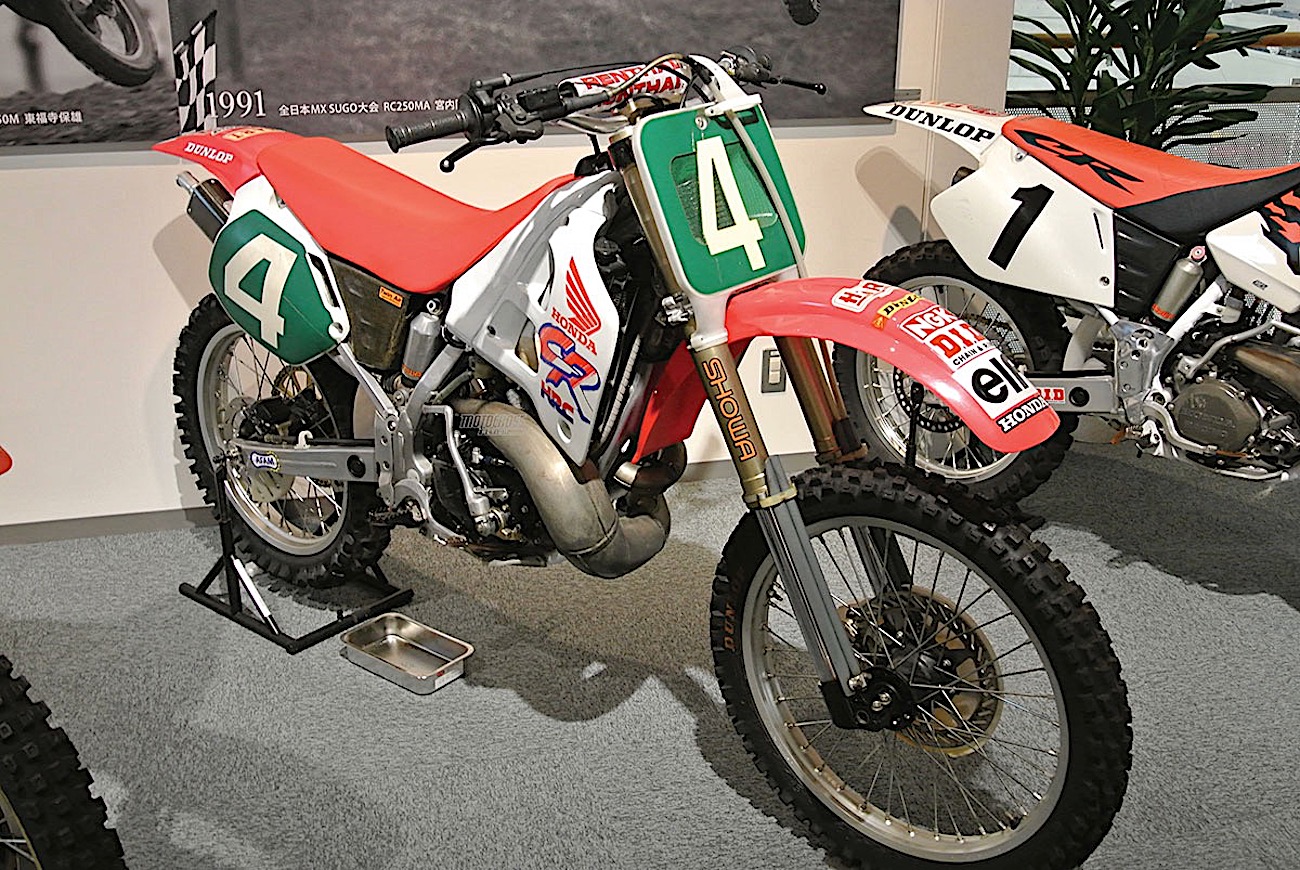 The RC250MA was easily recognized by its forward rotating kickstarter.
The RC250MA was easily recognized by its forward rotating kickstarter.
The RC250MA was never put into production, but further research resulted in Honda’s Hondamatic street bikes. They weren’t true automatics, though. The Hondamatic eliminated the need to use the clutch, but you still had to choose between shifting into one of two forward gears. Miyauchi’s works RC250MA bike now resides in the Honda Collection Museum and is easily recognized by its forward-moving kickstarter.


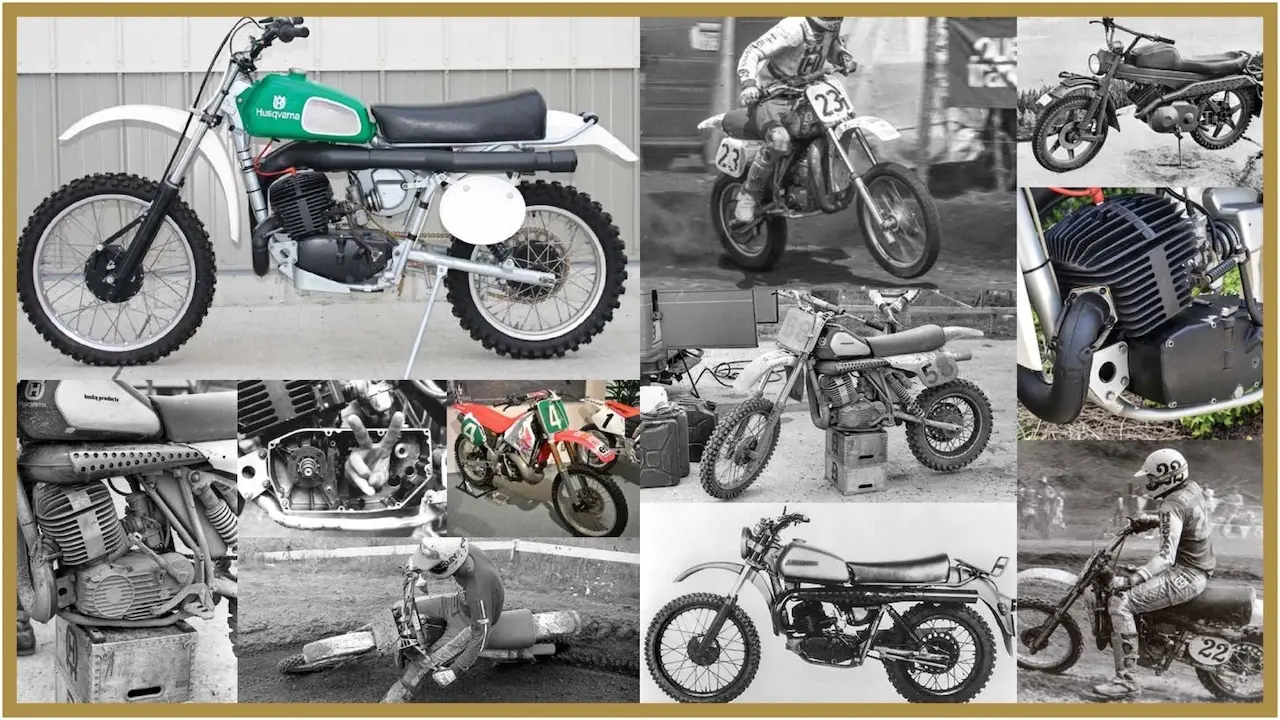


Comments are closed.